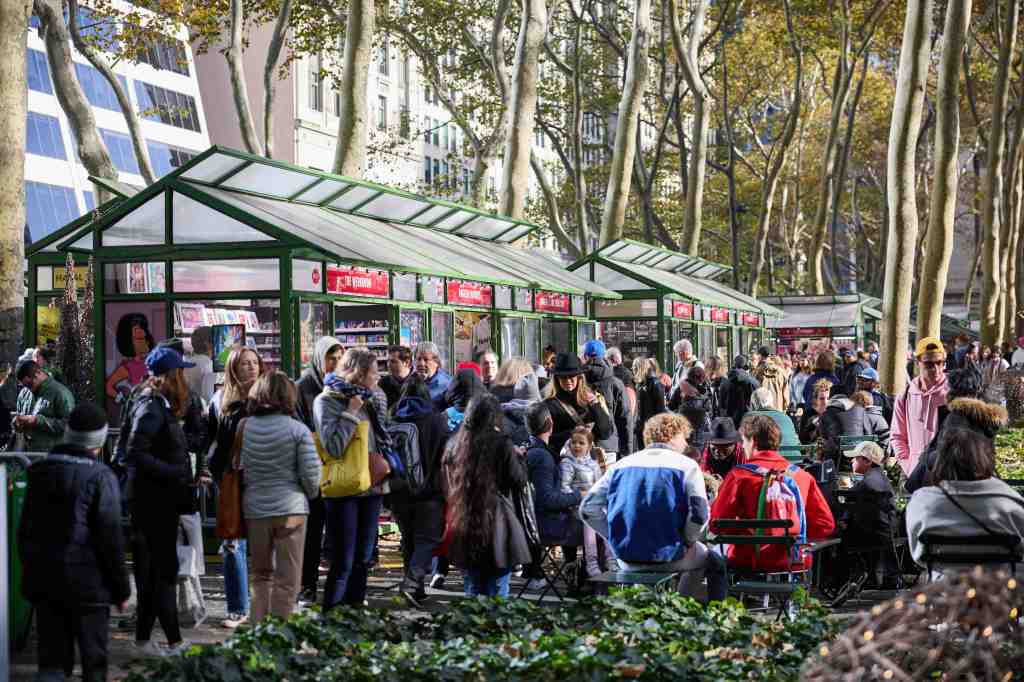How deep is the lull?
It’s the dog days of early December for retailers, when business typically nosedives following Cyber Week’s surge in gift shopping and aggressive price promoting.
But business so far this month hasn’t been as bad as expected, with reports on traffic and sales for early December hovering around flat, according to retail sources. That’s furthering hopes for small sales gains this holiday season overall, seen around 2 to 4 percent industry-wide. The shopping will pick up significantly — along with steeper discounting — 10 to 14 days before Christmas as it does each year, as late holiday shoppers scramble for gifts.
Last year retail sales during the November to December holiday season grew 5.3 percent over 2021 to $936.3 billion, according to the National Retail Federation.
“After Cyber Monday, the rest of the week — Tuesday, Nov. 28 to Saturday, Dec. 2 — was about plus 0.7 percent,” said Joe Shasteen, global analytics manager for RetailNext, which utilizes technology to track shopper traffic in stores and malls. Shasteen also said that traffic this year on Cyber Monday and the Sunday before was negative 0.5 percent compared to 2022.
“Business is a little better than what we thought,” said one top executive of a major retail conglomerate, commenting on business for early December. “New York City is up 5 percent over last year for December, but overall it’s a tough world out there.”
New York and some other major cities such as Miami have seen a significant pickup in tourism in recent weeks. That combined with cooler temperatures has helped retailers see a pickup on cold-weather clothing and accessories. The weather is expected to be relatively mild through December, which would encourage more shopping at stores, which leads to greater impulse purchasing compared to online shopping.
“I think people are happy the way the season has been going with possibly 2 or 3 percent sales gains” tallied by the end of the holiday season, said Walter Loeb, the veteran retail analyst and consultant.
RetailNext reported Monday that for the first week of December, U.S. traffic trends were up 0.5 percent compared to 2022, with net sales down 1.5 percent. Conversion rates were down 0.6 percent compared to last year, while units per transaction (UPT) were down 1 percent and average transaction value (ATV) was up 1.8 percent to last year.
RetailNext broke down its findings by region, reporting that for the first week of December, retail traffic in the Midwest was up 1.9 percent; the Northeast was up 0.8 percent. However, the West was down 0.4 percent and the South was down 1.3 percent compared to last year.
Traffic in mall stores rose 1.5 percent and off-mall stores were up 0.6 percent in the first week of December. Traffic at stores in outdoor malls rose 1.6 percent, while stores inside indoor malls rose 1.4 percent, RetailNext reported.
By category for week one of December, health and beauty recorded a plus 3.1 percent rise in traffic compared to last year, followed by apparel at plus 0.9 percent, and footwear stores at plus 0.3 percent. But jewelry came in flat at zero percent, and home was down for the week at negative 4.4 percent compared to last year, RetailNext reported.
Overseas during the first week of December, Europe, Middle East and Africa traffic was down 2.5 percent, with traffic at European stores up 0.9 percent and Middle Eastern stores down 6.1 percent.
“For the first week of December we were doing OK but you really got to fight for it. We’re trying to touch the customers in so many ways,” said one chief executive officer of an omnichannel brand. “Remember, December was pretty good last year, and so far we are running neck-and-neck.”
The CEO also said that the company’s retail stores were on the plus side, while the online business was flat. “The hardest part is the wholesale,” the CEO said. “You don’t control much on the wholesale side. You’ve got to fight for attention. You rely on your own stores to do their part. But overall we are positive.”
“Black Friday was very busy but traffic has fallen off since then,” said one real estate executive. “In general traffic has been good at the mall, more so at upscale malls, and luxury has shown improvement lately and is not down as much as it was. It’s still not in positive territory.”
The home business continues to be weak, middle-market retailers are soft, and athleisure continues to grow, observed the real estate executive. “The season seems more promotional than a year ago. But so far, “it’s all planned-for and on schedule. Sales are pretty much flat, which is the new good.”
As the National Retail Federation sees it, retail sales in November showed strong gains, according to the CNBC/NRF Retail Monitor, powered by Affinity Solutions.
“November Retail Monitor data shows that consumers are embracing the holiday season and promotions being offered by retailers,” NRF president and CEO Matthew Shay said in a statement. “Value-conscious shoppers are out looking for deals as they purchase gifts for family and friends, and this data indicates that they’re finding them. Since November makes up half the holiday season, these numbers are a positive indication of what we can expect for the full holiday season.” For purposes of tracking sales and making comparisons, the NRF characterizes the holiday season as Nov. 1 to Dec. 31.
Total retail sales, excluding automobiles and gasoline, were up 0.77 percent seasonally adjusted month-over-month and up 4.24 percent unadjusted year-over-year in November, according to the Retail Monitor. That compared with a month-over-month decrease of 0.08 percent and a year-over-year increase of 2.57 percent in October.
The Retail Monitor calculation of core retail sales — those excluding restaurants, autos and gas — showed increases of 0.73 percent month-over-month and 4.17 percent year-over-year in November. That compared with a month-over-month decrease of 0.03 percent and a year-over-year increase of 2.63 percent in October.
The NRF has predicted holiday sales, excluding autos, gas and restaurants, will increase between 3 and 4 percent over 2022, totaling between $957.3 billion and $966.6 billion.
The Census Bureau is scheduled to release its retail sales report for November on Thursday. Unlike survey-based numbers collected by the Census Bureau, the Retail Monitor uses credit and debit card purchase data compiled by Affinity.
According to the NRF, in November, clothing and accessories stores were up 0.87 percent month-over-month and up 5.81 percent year-over-year. General merchandise stores were up 1.03 percent month-over-month, and up 0.61 percent year-over-year. Online and other non-store sales were up 0.8 percent month-over-month seasonally adjusted and up 26.27 percent year-over-year.



